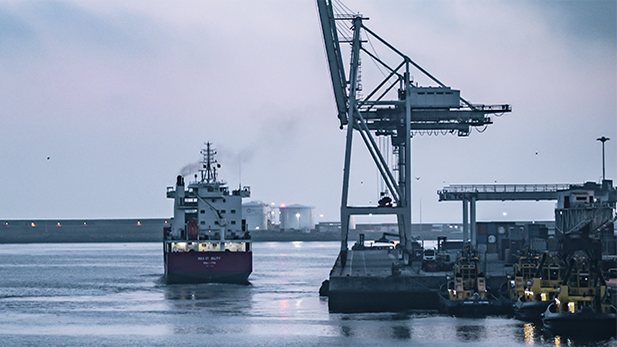Ports fail to adopt climate measures

Summary
Only a minority of the world’s largest ports make a targeted effort to reduce effects on the climate and air pollution. This is the conclusion of a global study of 93 of the largest ports in the world by CBS Maritime. The researchers share their results in a feature article first published in the Danish paper Søfart.
In a large new study from CBS Maritime which is freely available in the international scientific journal Transportation Research Part D, we show that the ports have many climate and air pollution measures at their disposal, including shore power for ships, infrastructure for alternative fuels (e.g. LNG and biodiesel), low-emission technology for mobile equipment, specific environmental requirements and standards, monitoring as well as discounts and other incentives to promote environmentally friendly behaviour among port users.
This is relevant because most measures are only effective when their use is widespread and standardised along the busiest global maritime trade routes. Consequently, there is a potential gap between the increasingly ambitious goals to reduce shipping emissions and the current spread of relevant measures and there is still a long way to go before the ambitions are met.
Global study
Only a minority of the world’s largest ports, however, make a targeted effort to reduce effects on the climate and air pollution. The ports that do are often driven by physical proximity to large cities, just as ports that primarily service container shipping are further ahead than tanker and dry bulk ports.
Finally, the study shows that ports operating with a “landlord” model – i.e., ports that rent out areas, buildings and loading and unloading equipment to companies – are more likely to invest in climate measures than service ports, where the port authority itself is an operator, or ports with a mixed business model with both rental and own services.
We have examined 93 of the world’s largest ports, many of which service container, dry bulk, and tanker shipping as well as other segments. Among the ports in the study, 31 are in Asia, 22 in Europe, 15 in Africa, India and the Middle East, 12 in North America, 8 in South America and 5 in Australia.
Moreover, we have examined the ports’ measures across all mobile emitters (the ports’ own boats, barges, ships and cars, the arriving ships, terminals, and other port equipment such as cranes, terminal tractors, and forklifts).
Surprising results
Generally, our results are consistent with scientific literature in the field, but they also differ from some common assumptions and models. For instance, we find no link between the size of the ports and investments in emission measures, just as the ownership of the ports does not appear to play a role. The ports’ ownership not having an impact may seem puzzling as the working hypothesis that public companies are more likely to take climate and environment initiatives than private companies is very alluring.

We also identified port-specific conditions enhancing the adoption of different measures. For instance, incentives are more common among “landlord” ports and ports in densely populated areas. Similarly, monitoring is more common in ports located in densely populated areas.
Incentives and monitoring are the measures that the ports use. An obvious question is therefore whether monitoring and financial incentives are low-hanging fruits or necessary prerequisites for more ambitious emission measures.
Monitoring, for instance, enables the ports to collect data on emission levels, which provides a better basis for initiating more ambitious environmental investments. These questions give rise to further research in the area.
Adoption patterns
Finally, we identified interesting patterns in the adoption of air abatement measures in ports and there is a clear tendency for ports to implement specific bundles of measures.
While the adoption of environmental requirements and standards apart from statutory requirements are not linked to the adoption of other measures, the study clearly shows that ports using financial incentives typically also offer alternative fuels for ships and other mobile emitters.
The results are relevant as the effectiveness of air emissions abatement measures increases when adoption rates are high. We therefore suggest that ports ought to collaborate on and coordinate abatement efforts as well as agree on a common direction to achieve greater effectiveness.
Our analysis relies on the ports’ own external communication about climate measures, and we cannot know whether some ports do more than they report. Some ports may also spend considerable resources on communication about measures, which then turn out to have insignificant effects on reducing air emissions.
This cannot be determined from the present analysis, which is why we believe that a critical examination of the external communication of ports on air emission reduction efforts is an important avenue for future studies. It is important to assess the effectiveness of ports’ individual air emissions abatement initiatives for the purpose of identifying those with the greatest environmental potential.
FEATURE
By
Henrik Sornn-Friese, CBS (hs.si@cbs.dk)
René Taudal Poulsen, CBS (rtp.si@cbs.dk)
Agnieszka Urszula Nowinska, AAU (aun@business.aau.dk)
Peter de Langen, CBS (pdl.si@cbs.dk)
The feature was first published in Søfart on 11 January 2021
Based on a research article published in Transportation Research part D.